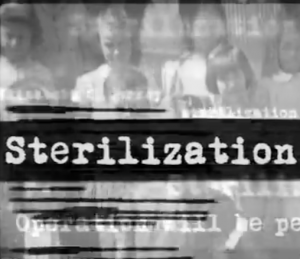The Science and Politics of Psychedelic Research
SJWG Rapporteur Report
2 March 2011
MAPS engages with the Science and Justice Working Group
Four key members of the Multidisciplinary Association for Psychedelic Studies joined
the space of the Science and Justice working group to focus on the practices involved
with bringing the psychedelic compound MDMA (more commonly known as ‘ecstasy’) to
phase III drug trials for the treatment of Post-Traumatic Stress Disorder (PTSD).
The meeting opened with a brief history of the MAPS mission in relation to MDMA
related by by Josh Sonstroem (MAPS Director of Finance and IT). A tremendous
controversy around MDMA emerged in the mid eighties. As therapists explored
potential applications for the compound in therapeutic use, MDMA was also discovered
by the party community, causing a political backlash that would ultimately lead to the
drug becoming a Schedule I controlled substance, meaning it would be classified as
having no medical use and a high potential for abuse. MAPS founder and director Rick
Doblin thus began a 20 year battle to reassert the medical uses of MDMA. His efforts to
bring therapists who had used the drug with therapeutic success were waylaid by
studies funded by the National Institute of Drug Abuse (NIDA) claiming that MDMA
caused brain damage after only one use. Although these studies were later shown to
be scientifically inaccurate in several ways, a tremendous amount of ground would have
to be regained in order to reclassify the drug as medically valuable.
Valerie Mojeiko (MAPS Deputy Director and Leader of the Psychedelic Harm-Reduction
Program) thus picked up the thread at this point to explain MAPS early positioning as a
non-profit focused on public education. Beyond publishing and disseminating
information about psychedelic research, MAPS began the Psychedelic Harm-Reduction
Program with the Black Rock City Rangers, a volunteer group at the Burning Man
Festival that focuses on mediating difficult situations, including uncomfortable
psychedelic experiences. It was in this context that MAPS was first able to develop a
form of psychedelic therapeutic practices.
Brad Burge (MAPS Communication and Education Associate) brought the discussion
further along in history by explaining how the early Ricardi study, the one that claimed to
show that MDMA has only-adverse effects, was ultimately overturned by later research.
Burge also helped to explain how early NIDA-funded studies actually contained a
tremendous amount of data that would be used to support MAPS’s argument that
MDMA was safe for human use. While the presentational tone of these studies focused
on the dangers of MDMA, the actual data they contained showed that MDMA did not
carry any lasting adverse effects. This elegant re-appropriation of scientific data
produced by anti-MDMA groups would typify the MAPS strategy in future engagements.
Berra Yazar-Klosinksi (MAPS Clinical Research Associate followed up by providing an
in-depth explanation of clinical practices employed in MAPS funded studies being
carried out in North Carolina, Switzerland, Israel and Jordan. The crux of this
explanation was to demonstrate that the measurement techniques employed by the
FDA to test other compounds for the treatment of PTSD are tremendously well suited to
MDMA therapy. In particular, the Clinician Administered PTSD Scale (CAPS) very
successfully demonstrates the value of three MDMA assisted therapy sessions for the
treatment of PTSD. It is primarily these successes that have led MAPS to recently
rebrand itself as a non-profit drug development organization. Berra also discussed the
difficulties of applying the CAPS in the various languages and social milieus in which
MDMA trials are being carried out. A tremendous amount of work still needs to be done
to bring MDMA into mainstream medicine. Every year MAPS becomes more successful
at addressing what needs to be accomplished and finding creative new ways to achieve
their goals.
Members of the Science and Justice Workgroup then contributed comments,
suggestions and critiques that might help MAPS members explore new possibilities for
successful scientific practices. Jake Metcalf opened with questions about MAPS
branding practices associated with their prospectus. In particular, Metcalf discussed the
imagery used in the prospectus; the prospectus shows a variety of stock photos of
‘mainstream’ people such as soldiers and housewives and assiduously avoids
counterculture tropes. The ensuing discussion about MAPS’ branding practices
considered the challenges of simultaneously appealing to funders, adopting a pose of
objective scientific research practices, and maintaining some connection to MAPS’
countercultural roots. Jenny Reardon followed this thread with a series of questions
focused on considering how MAPS might challenge the scientific practices employed by
the FDA while still moving towards their goal of mainstream medical acceptance. She
suggested that while MAPS may be trying to take the drugs out of the counterculture
and take the counterculture out of the drugs, there may be useful epistemic insights in
countercultural science. She noted that particularly in Northern California there is a long
history of important technoscience endeavors initiated by members of the
counterculture as a countercultural effort. Martha Kenney focused on concerns
surrounding the translations issues of the CAPS, and suggested a moved towards
critically considering these issues as part of the measurement practices, rather than as
a mere veil to objective understanding. This sparked discussion from the MAPS guests
about the various challenges of testing for PTSD in different cultures—if the tests are
translated from English on the fly by the tester then there is no consistency in the test.
But even translating in advance poses a challenge because PTSD is articulated through
a culture’s psycho-social constructs. Natalie Purcell also posed a valuable question
about how MDMA treatment might be producing a certain conception of the
phenomenon of PTSD across cultures that deserves critical attention. Karen Barad
posed a question about the expression of side-effects to MDMA therapy, and how they
might be addressed through good scientific practices.
MAPS representatives took these considerations in the spirit of collaboration and
expressed their excitement at exploring them further, both within MAPS itself, and as
part of future meetings of the Science and Justice Working Group.

